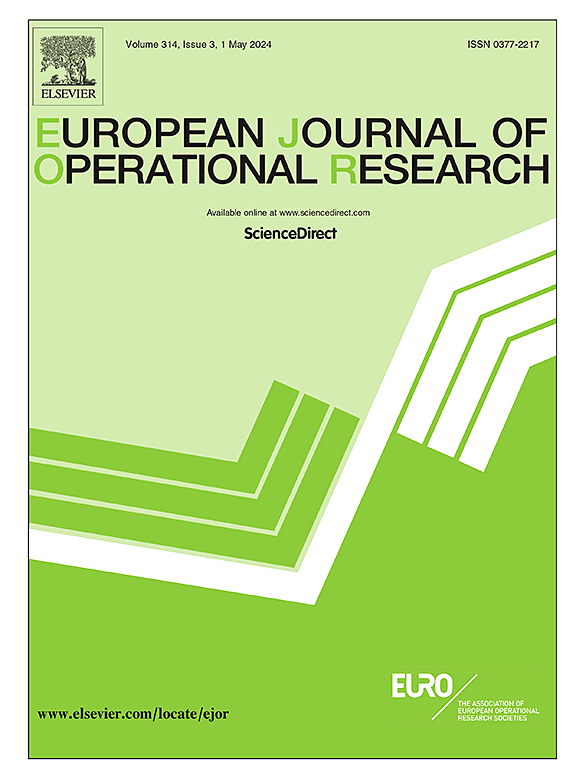Solving a multi-resolution model of the train platforming problem using Lagrangian Relaxation with dynamic multiplier aggregation
IF 6
2区 管理学
Q1 OPERATIONS RESEARCH & MANAGEMENT SCIENCE
引用次数: 0
Abstract
High-speed railway stations are crucial junctions in high-speed railway networks. Compared to operations on the tracks between stations, trains have more routing possibilities within stations. As a result, track allocation at a station is relatively complicated. In this study, we aim to solve the train platforming problem for a busy high-speed railway station by considering comprehensive track resources and interlocking configurations. A multi-resolution space–time network is constructed to capture infrastructure information from a macroscopic and a microscopic perspective. Additionally, we propose a nonlinear programming model that minimizes a weighted sum of total travel time and total deviation time for trains at the station. We apply Lagrangian Relaxation combined with dynamic multiplier aggregation to a linearized version of the model and demonstrate how this induces a decomposable, macroscopic train-specific path choice problem that is guided by aggregated Lagrange multipliers, which are dynamically generated based on microscopic resource capacity violations. As case studies, the proposed model and solution approach are applied to a small virtual railway station and two high-speed railway hub stations located on two of the busiest high-speed railway lines in China. Through a comparison of other approaches that include Logic-based Benders Decomposition, we highlight the superiority of the proposed method; on realistic instances, the proposed method finds solution that are, on average, approximately 2% from optimality for one station and less than 5% from optimality for the other.
利用拉格朗日松弛法求解列车站台问题的多分辨率模型
高铁站是高速铁路网的重要枢纽。与在车站之间的轨道上运行相比,列车在车站内有更多的路线选择。因此,车站的轨道分配相对复杂。在本研究中,我们将考虑综合轨道资源和联锁配置,以解决繁忙高铁站的列车站台问题。构建了一个多分辨率时空网络,从宏观和微观两个角度捕捉基础设施信息。此外,我们提出了一个非线性规划模型,以最小化车站列车的总行程时间和总偏差时间的加权总和。我们将拉格朗日松弛结合动态乘数聚合应用于模型的线性化版本,并演示了这如何引发一个可分解的宏观列车特定路径选择问题,该问题由聚合拉格朗日乘数引导,该问题是基于微观资源容量违规动态生成的。作为案例研究,提出的模型和解决方法应用于位于中国两条最繁忙的高速铁路线路上的一个小型虚拟火车站和两个高速铁路枢纽站。通过对其他方法的比较,包括基于逻辑的弯曲分解,我们强调了该方法的优越性;在实际实例中,所提出的方法找到的解平均距离一个站点的最优解约为2%,距离另一个站点的最优解小于5%。
本文章由计算机程序翻译,如有差异,请以英文原文为准。
求助全文
约1分钟内获得全文
求助全文
来源期刊

European Journal of Operational Research
管理科学-运筹学与管理科学
CiteScore
11.90
自引率
9.40%
发文量
786
审稿时长
8.2 months
期刊介绍:
The European Journal of Operational Research (EJOR) publishes high quality, original papers that contribute to the methodology of operational research (OR) and to the practice of decision making.
 求助内容:
求助内容: 应助结果提醒方式:
应助结果提醒方式:


